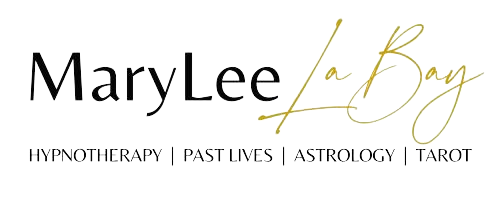Phobias—those pesky fears that turn everyday situations into sources of dread—affect millions worldwide. Whether it’s arachnophobia (fear of spiders) or aerophobia (fear of flying), phobias can significantly impact daily life. The good news? Hypnotherapy vs. Traditional Therapy are two popular approaches to treating these fears.
But which one works best? Let’s explore!
Traditional Therapy: The Standard Choice

Traditional therapy, particularly Cognitive Behavioral Therapy (CBT) and Exposure Therapy has long been the go-to approach for treating phobias. Let’s break down how these methods work.
Cognitive Behavioral Therapy (CBT)
CBT is a talk therapy strategy that attempts to pinpoint and eliminate negative thought patterns that contribute to fears and phobias by examining the relationship between thoughts, emotions, and behaviors.
For instance, if someone fears public speaking, CBT might focus on reframing catastrophic thoughts like “I’ll humiliate myself” into more rational beliefs like “Even if I make a mistake, people will understand.”
Effectiveness
Research consistently shows that CBT is highly effective for treating phobias. A study cited in Behaviour Research and Therapy stated that over 70% of participants experienced significant improvement in their symptoms after CBT.
Exposure Therapy
Exposure therapy takes a more “hands-on” approach. It involves giving clients increasing exposure to their feared object or situation in a safely managed environment. The idea is to desensitize the brain’s fear response over time.
Effectiveness
Studies reveal that exposure therapy boasts a success rate of around 90% for specific phobias when patients stick to the program. However, this strategy requires the client to be courageous and consistent.
Strengths of Traditional Therapy
- They are backed by decades of research.
- Widely available in most locations.
- Generally are covered by a client’s insurance plan.
- Structured and goal-oriented.
Limitations
- Results may take weeks or months to realize.
- Some individuals find the confrontation of fears overwhelming.
- It primarily focuses on conscious thought patterns, sometimes missing deeper subconscious roots.
Hypnotherapy: The Subconscious Solution
Hypnotherapy, often misunderstood thanks to stage hypnotists and Hollywood dramatizations, is a therapeutic approach that taps into the subconscious mind to address phobias at their root.
How It Works

A hypnotherapist uses induction techniques to guide an individual into a focused yet relaxed state, similar to a deep meditation. In this state, a connection is made between a client’s conscious and subconscious minds for a clearer view of their emotions, thoughts, and memories. Healing techniques can be applied at this level to make deep-seated changes. For instance, someone who fears heights might be able to recall when they were in danger of falling and had initiated this fear response. Through various healing techniques applied within the “hypnotic envelope”, clients rapidly desensitize that fear response or learn to differentiate that moment from present exposure to heights, replacing the fear response with a rational assessment of the situation.
In a client-centered holistic practice, various techniques are incorporated that gently address the issue comfortably for the client while getting to the root cause and collapsing all the triggers.
Effectiveness
While research on hypnotherapy is still growing, studies have shown promising results. A meta-analysis published in the International Journal of Clinical and Experimental Hypnosis found hypnotherapy to be effective in reducing phobic symptoms, with many patients experiencing rapid improvement.
Strengths of Hypnotherapy
- Fewer sessions are generally required to achieve results.
- It targets the subconscious mind, which often drives phobias.
- Gentle and non-confrontational, appealing to individuals who find exposure therapy daunting.
Limitations:
- It is not as widely studied or understood as traditional therapy.
- It may take time and research to find a qualified hypnotherapist.
- Some people are skeptical or resistant to the idea of hypnosis.
A Client Story

A man we’ll call Tony came to my office in desperation to overcome his fear of needles. He was facing surgery and knew that the pre-surgery tests and the operation would involve the dreaded needles. His phobia began decades earlier when he had to submit to a series of injections in the Army. By the time he appeared in my office, it had escalated to the point that his body would noticeably jerk just saying the word.
Guiding him into hypnotherapy, I employed a healing technique that is effective in desensitizing fears and phobias. It involved having Tony imagine entering an empty theater and finding a center seat. Then, he was directed to imagine floating up into the projection room and looking through the small window at the back of his head in the seat in the center row. He is dissociated twice from his experience since he is watching himself watch the movie. The project starts up, and the movie of his traumatic experience begins. He describes going into the office, checking in with the receptionist, waiting, and then entering the patient room, where the doctor enters with a gigantic syringe. Then, the film rewinds, and he watches everything moving backward to the beginning of the movie.
The movie rolls again, and he describes the scene to the end, with little change, and then it rewinds. Then, Tony imagines floating back down into his body, seated in the center of the theater. He watches the movie from this perspective, one step dissociated from his experience. This time, Tony embellishes the story with humorous details, such as the doctor coming in wearing a clown nose and big floppy shoes. He gets his blood drawn, and he isn’t as upset because he is marveling at how silly his doctor is being. We go through the movie two more times, each with a new version that is more absurd.
Next, I direct Tony to walk up to the stage and step into the movie. Now, he is associated with his experience and moving through it from the first-person perspective. The story gets funnier, and he is more relaxed. Going through the entire scene two more times, he is completely calm and confident that the needle isn’t going to be a big deal. He realizes he has experienced more pain from stubbing his toe or getting a headache. He is fine now and can freely talk about needles and his upcoming surgery without his former jerk response.
That session took one hour.
What Does the Research Say?
Recent studies have compared the effectiveness of hypnotherapy and traditional therapy head-to-head.
Speed of Results
Hypnotherapy often delivers faster results. A study in Contemporary Hypnosis found that many individuals overcame their phobias in just 3–5 sessions, whereas traditional therapy usually requires 10–20 sessions.
Long-Term Success
CBT and Exposure Therapy have a strong track record for long-term success, yet depend on patients practicing what they’ve learned in real-world settings. Hypnotherapy’s long-term effectiveness can vary, depending on the therapist’s skill and the patient’s openness.
Tailored Approach
Hypnotherapy excels in personalizing sessions based on an individual’s unique experiences and subconscious triggers. It is particularly effective when the hypnotherapist uses client-centered techniques rather than reading a pre-written script. Traditional therapy, as well as scripted hypnosis, while structured, can sometimes feel “one-size-fits-all.”
Patient Preference
Interestingly, patient preference plays a significant role. A 2022 survey by the Journal of Anxiety Disorders found that individuals who believed in the effectiveness of their chosen method (hypnotherapy or traditional therapy) were more likely to stick with treatment and see results.
So, Which Is More Effective?
Here’s the catch – there’s no definitive answer. The best approach for a given client often depends on their comfort, awareness of the options, and type of phobia.
Traditional Therapy Is Ideal If:
- You prefer a method with extensive scientific backing.
- You are comfortable with a gradual, systematic approach to confronting fears.
- Your insurance covers the cost.
Hypnotherapy Might Be Better If:
- You’re seeking a faster, more holistic, and subconscious-driven approach.
- You feel overwhelmed by the idea of directly confronting your fears right away.
- You’re open to trying alternative therapies and have found a skilled hypnotherapist.
Making Your Best Choice
Whether you choose hypnotherapy or traditional therapy, your decision should depend on your comfort level, type of phobia, and willingness to commit.
Traditional Therapy Might Be Best If:
- You prefer extensively researched methods.
- Gradual confrontation of fears feels manageable.
- Your insurance covers therapy costs.
Hypnotherapy Might Be Better If:
- You seek a faster, holistic approach.
- Confronting fears directly feels overwhelming.
- You’re open to alternative therapies.

